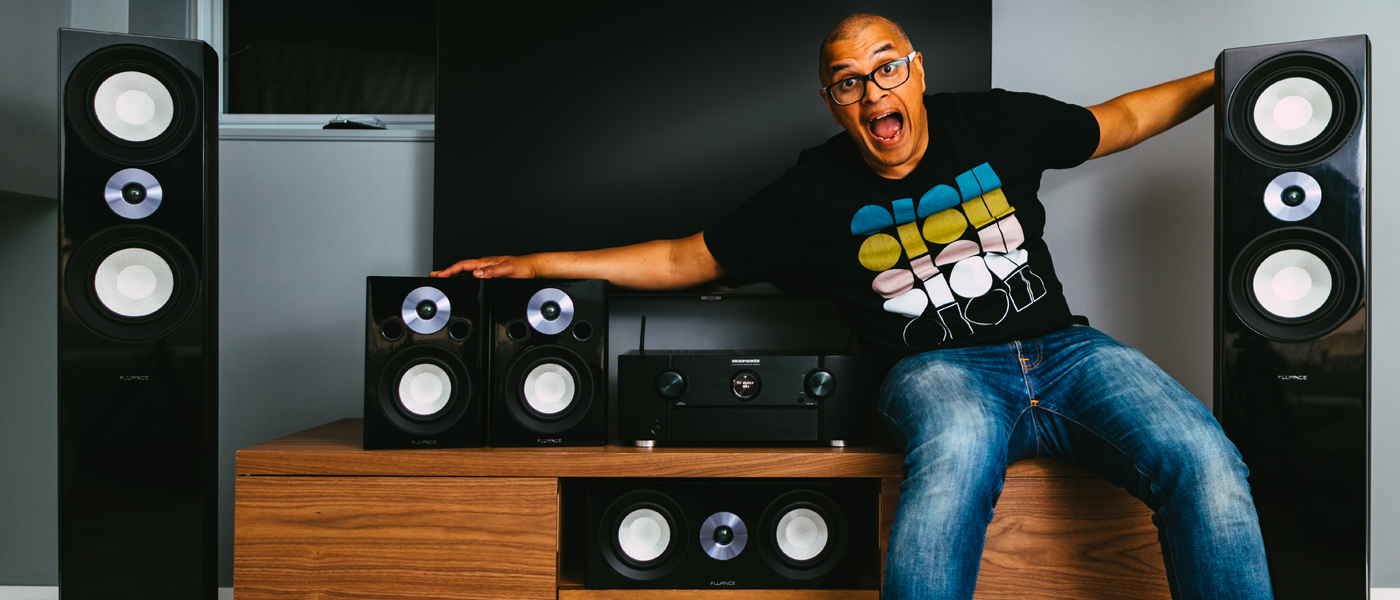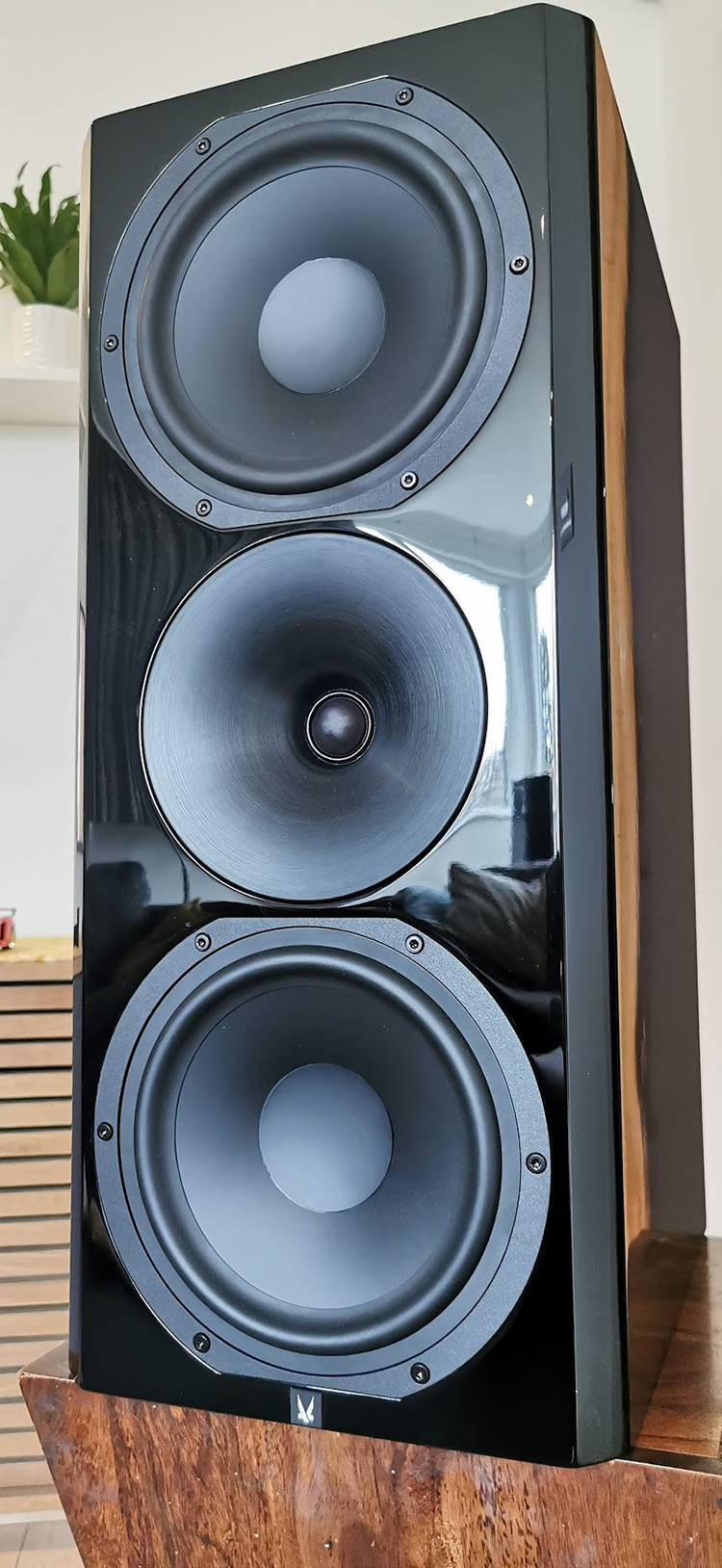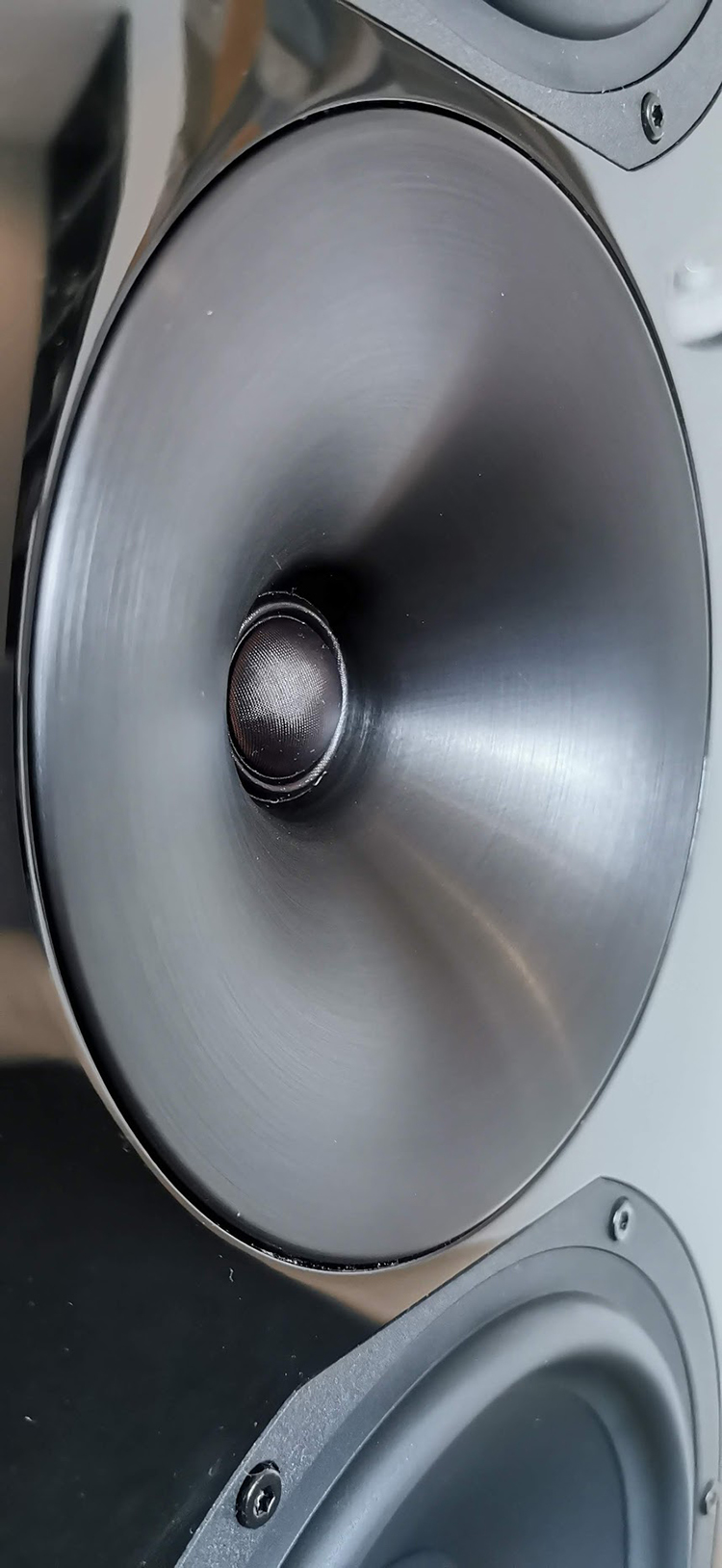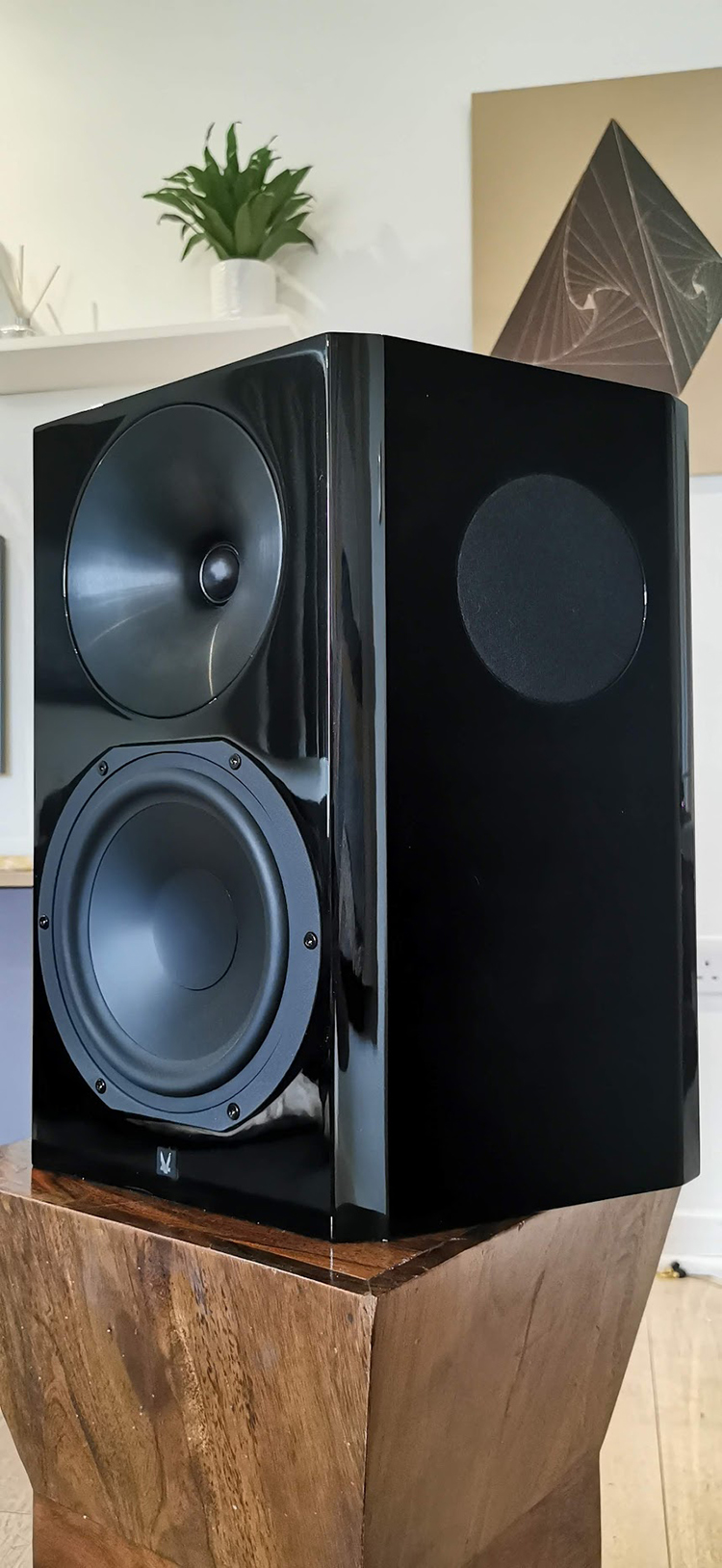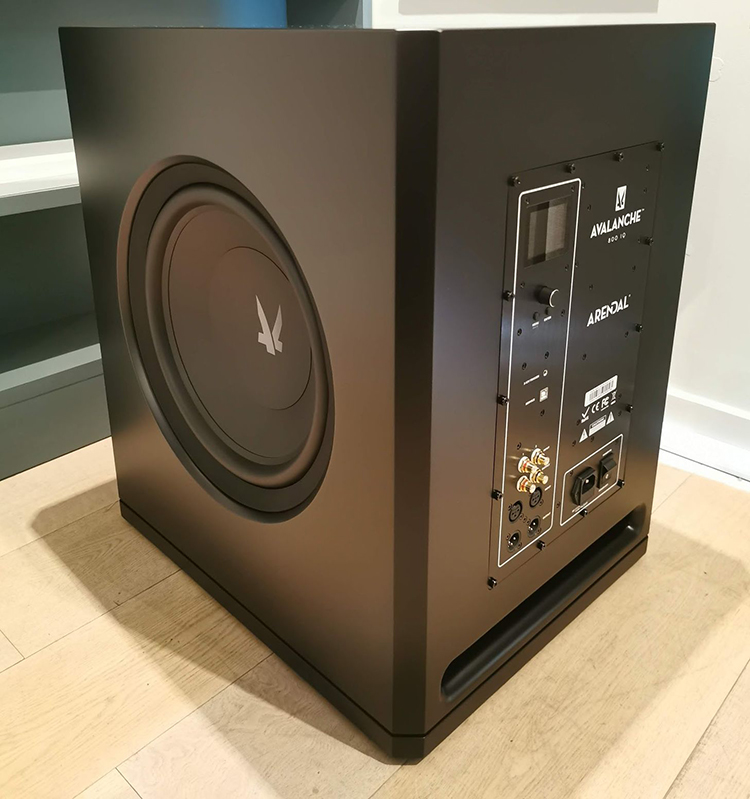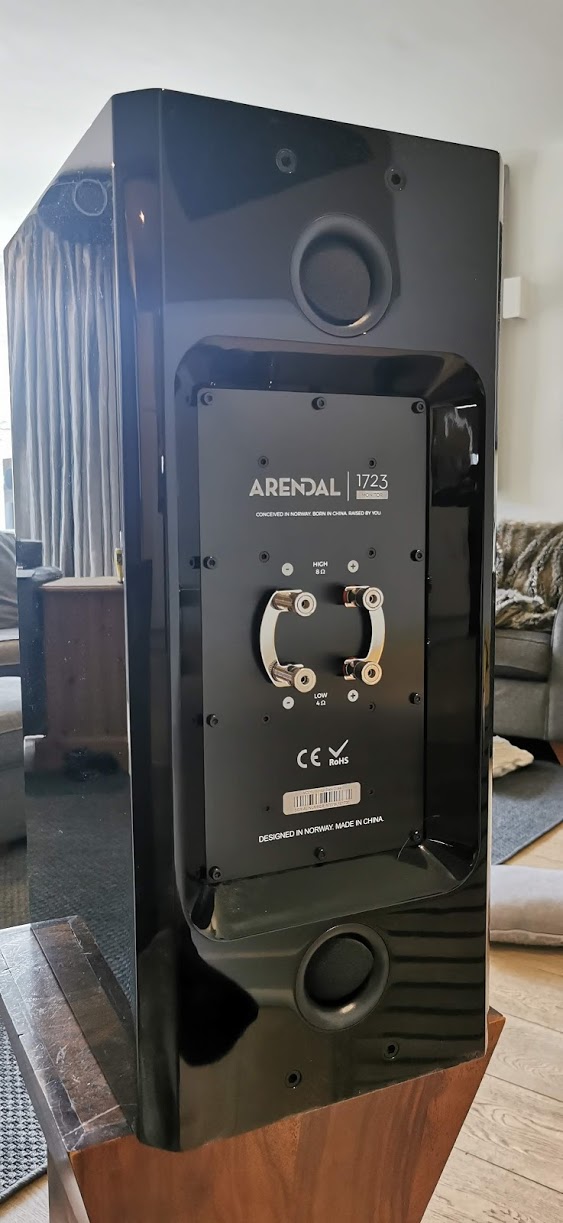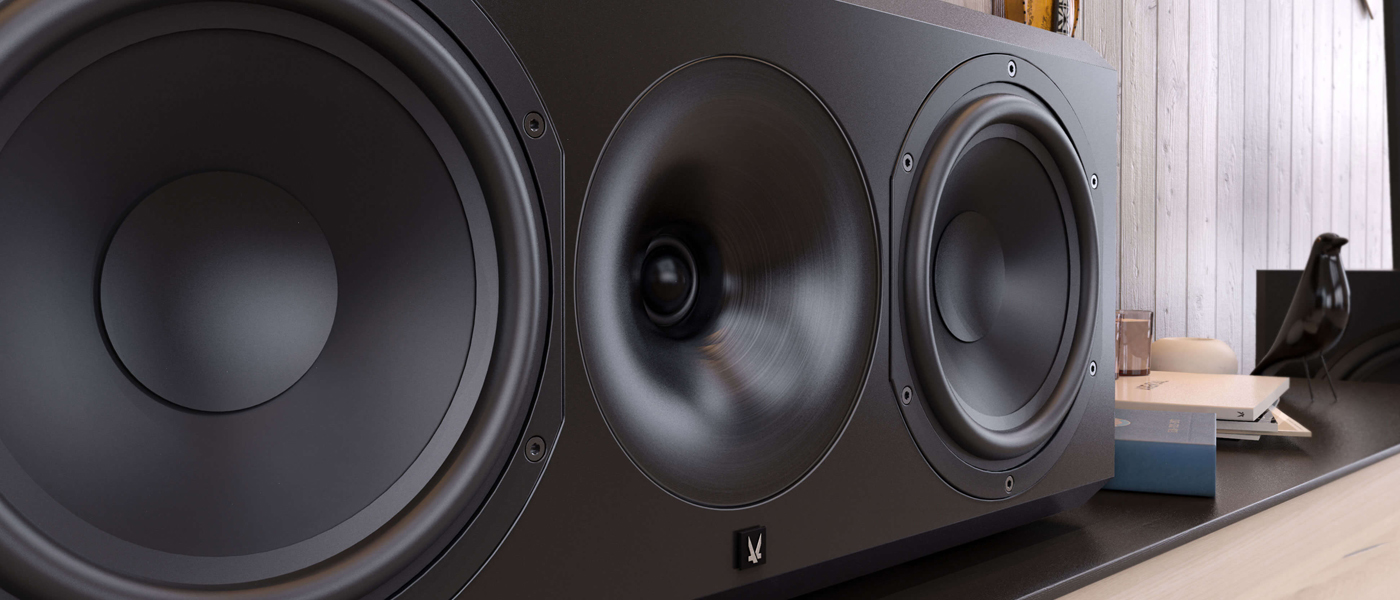
Established in 2016, Norwegian brand Arendal Sound – named after the municipality in southeastern Norway where its founder was born – is a relative newcomer to the home theater and hi-fi scene. Its founders have been in the industry for almost 20 years though, having previously operated an online store, L-Sound, which took the American muscle of ATI amplifiers and SVS subs to European shores. As such, when the people behind L-Sound decided to set up Arendal Sound and build their own subs and speakers, they had a good understanding of the market and knew what they were up against. They asked themselves: what would a true, no-compromise home theater speaker package look like? The 1723 THX Series was their answer.
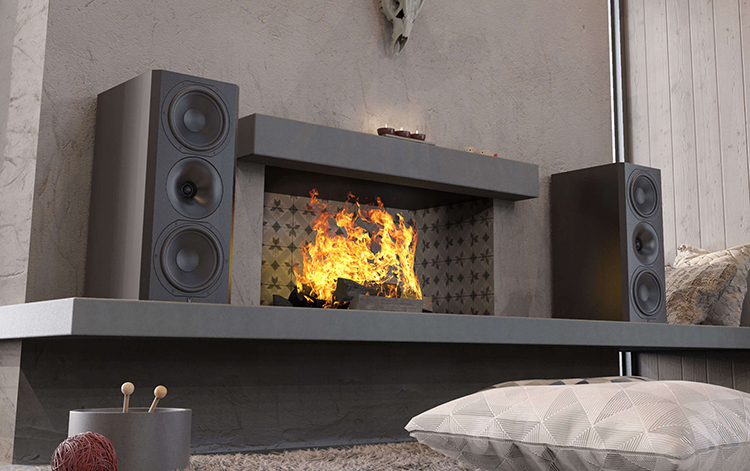
Arendal Sound 1723 THX 5.2 Channel Surround Sound System
- Superb build quality with a host of premium touches.
- High power handling, THX-certified 4 Ohm design.
- Unusually large waveguide yielding excellent polar characteristics.
- Superb coherence across the package, with surrounds sharing the same drivers as the mains.
- Sub 1V digs comfortably into infrasonic territory with a host of PEQ and other setup options.
- 1723 Surround THX ‘TriAxial’ design contributes to an impressively immersive sound.

The 1723 THX Series consists of the Tower THX, the Monitor THX, the Center THX, the Surround THX, and a selection of subs. While Arendal’s product line-up has evolved since the introduction of the 1723 THX Series back in 2016, the series still tops their range. In 2020, Arendal launched a new line of 1723 subwoofers, from a sealed unit with a 13.8” driver that Arendal amusingly describes as “compact”, through to a dual 13.8” driver ported beast.
Secrets Sponsor
I’m familiar with the previous line of Arendal subs – my reference set up includes a Sub 3, their previous top of the line – so I was keen to see what the newer subs were capable of. I’ve also always been curious to hear the 1723 THX Series and hoped to use the release of their new subs as an excuse to have a full system in for review. Fortunately for me, Arendal were kind enough to oblige.
1723 Monitor THX
Design:
2-way, bass reflex with Dual 2” rear ports
Enclosure:
Sealed or vented alignment using foam port plugs
Tweeter:
28mm soft dome with waveguide
Woofer:
Dual 8″ with long fiber pulp cones
Enclosure material:
High Density Fiberboard (HDF)
Xover freq:
1500Hz
Sensitivity:
89dB/2.83v/1m
Freq. response:
Sealed: 58-20kHz (+/-3dB)
Vented: 34-20kHz (+/-3dB)
Impedance:
4-ohm nominal
Accessories:
Manual. Rubber pads. Port plugs.
Dimensions (Centimeters):
63.5 H x 27.5 W x 40 D
Weight:
26.7 kg
Finishes:
Black (gloss or satin), White (gloss or satin)
MSRP:
$1999.00 (pair)
1723 Center THX
Design:
2-way, bass reflex with Dual 2” rear ports
Enclosure:
Sealed or vented alignment using foam port plugs
Tweeter:
28mm soft dome with waveguide
Woofer:
Dual 8″ with long fiber pulp cones
Enclosure material:
High Density Fiberboard (HDF)
Xover freq:
1500Hz
Sensitivity:
89dB/2.83v/1m
Freq. response:
Sealed: 58-20kHz (+/-3dB)
Vented: 34-20kHz (+/-3dB)
Impedance:
4-ohm nominal
Accessories:
Manual. Rubber pads. Port plugs.
Dimensions (Centimeters):
27.5 H x 63.5 W x 40 D
Weight:
26.7 kg
Finishes:
Black (gloss or satin), White (gloss or satin)
MSRP:
$999.00 (pair)
1723 Surround THX
Design:
Acoustic suspension, on-wall
Enclosure:
Sealed
Tweeter:
28mm soft dome with waveguide
Midrange:
Dual 4”, side-firing
Woofer:
Single 8″ with long fiber pulp cones
Enclosure material:
High Density Fiberboard (HDF)
Xover freq:
200Hz, 1400Hz
Sensitivity:
87dB/2.83v/1m
Freq. response:
58-20kHz (+/-3dB)
Impedance:
4-ohm nominal
Accessories:
Manual. Rubber pads. Wall mounting bracket.
Dimensions (Centimeters):
45 H x 43.2 W x 21.6 D
Weight::
17.4 kg
Finishes:
Black (gloss or satin), White (gloss or satin)
MSRP:
$1499.00 (pair)
1723 Subwoofer 1V
Design:
Subwoofer
Enclosure:
Vented (can ve sealed via plug)
Amplifier:
Avalanche 800 IQ, 800 Watts RMS
Woofer:
Single 13.8″ with long fiber pulp/fiberglass cone
Enclosure material:
High Density Fiberboard (HDF)
Freq. response:
EQ1 Sealed 18-200Hz (+/-3dB)
EQ2 Sealed 25-200Hz (+/-3dB)
EQ3 Sealed 33-200Hz (+/-3dB)
EQ1 Vented 17-200Hz (+/-3dB)
EQ2 Vented 22-200Hz (+/-3dB)
EQ3 Vented 30-200Hz (+/-3dB)
Port (Centimeters):
2.5 H x 35.0 W Slot
Accessories:
Manual. Port Plug. Power Cable.
Dimensions (Centimeters):
62.5 H x 45.0 W x 55.0 D
Weight:
48.1 kg
Finishes:
Black (gloss or satin), White (gloss or satin)
MSRP:
$1599.00 (each)
Warranty:
10 years (speakers), 5 years (electronics) Parts and Labor
Website:
Company Directory:
SECRETS Tags:
arendal, 1723, THX, monitor, subwoofer, surround, home theater, surround system reviews, review 2021
The system in for review comprises a pair of Monitor THXs, the Center THX, a pair of Surround THXs, and two ported Sub 1Vs. The speakers are all 4 Ohm designs and reasonably sensitive at 89dB for the Monitors and 87dB for the surrounds. The recommended amplifier power for the Monitors is 400W at 4 Ohms and 300W for the Surrounds. That, combined with the sensitivity, means that the Arendals should comfortably hit 105dB reference peaks in all but the largest listening rooms, thereby meeting the requirements of THX certification, which the speakers wear so proudly.
The Monitors and the Center are identical two-way designs featuring two 8” mid-bass drivers alongside a 1.1” tweeter set within a deep waveguide. The mid-bass drivers are constructed of lightweight, long fiber pulp cones, handing over to the tweeter at 1500Hz and digging down to 58Hz in sealed mode or 34Hz in fully ported mode. The two ports on the rear are supplied with foam plugs, giving owners the option of a slightly fuller bottom end and steeper bass roll-off with ports open or a slightly tighter impulse response and more gradual roll-off with ports sealed. The cabinets are on the large side for a stand-mount design, at 25” high, 11” wide, 15 3/4” deep, and weighing in at nearly 60 lbs.
Perhaps the most notable feature of the 1723 THX Series is that deep waveguide, constructed out of a mixture of aluminum and high-density fiberboard. There are several benefits to such a waveguide. The higher up the frequency range sound goes the more directional it becomes and one consequence of that is off-axis performance suffers. The waveguide helps control the tweeter’s off-axis response across its operating range, achieving a more disperse top end. It also helps control dispersion at the bottom end of the tweeter’s range, ensuring that it closely matches the directivity of the woofer, assisting the integration between drivers.
A further advantage of the waveguide is that it increases the tweeter’s efficiency (think about how your voice sounds louder when you cup your hands around your mouth). That increase in efficiency – which is another way of saying the driver works less hard for a given sound pressure level – reduces distortion. That, in turn, means the tweeter is able to operate down to an unusually low 1500Hz crossover, a frequency at which most tweeters without waveguides would suffer unacceptable distortion. A low crossover like this has benefits for the mid-bass woofer, reducing the requirement for it to produce frequencies it’s not well-suited to producing. The 8” woofer used in the Arendals is great for impactful bass but less adept with the upper midrange. At 8” the woofer will start to beam at around 2kHz and lose off-axis performance well before that. Crossing over to the tweeter at 1500Hz means the woofer is not called upon to operate in a range where it suffers from beaming. In theory, this all adds up to speakers with carefully controlled distortion and dispersion patterns, with the fringe benefit of a simplified crossover, due to the similarity in polar characteristics between the woofers and waveguide-set tweeter.
The front of the Surround THX uses the same waveguide-set tweeter alongside an identical 8” mid-bass driver, employing a slightly lower 1400Hz crossover. The front-firing drivers are accompanied by 4” dipolar drivers on each of its angled sides, operating above 200Hz. Arendal refers to this as a ‘TriAxial’ design. It’s a familiar arrangement to that seen on several other brands’ surrounds and is said to provide a more enveloping soundstage by projecting sound outwards and to the side. It is, however, less familiar to see surround speakers that feature an identical mid-woofer and waveguide to that on the main speakers. As a result of using the same drivers as the mains, the surrounds are large for a design that’s intended to be flush mounted to a wall. At almost 18” high, 17” wide, and weighing in at just over 38 lbs, you’ll need sturdy walls!
Using the same drivers as those in the mains should ensure the surrounds integrate well, making that seamless ‘surround bubble’ all the more achievable. That’s particularly the case if you’re able to accommodate the three identical mains in a vertical orientation at the same height (e.g. behind an acoustically transparent projector screen), in which case the front three speakers should blend together perfectly.
The Sub 1V is the second-largest subwoofer of Arendal’s new range and sports a single 13.8”, side-firing driver. As with all subs in the 1723 range, the Sub 1V features both XLRs and RCAs. The 1V’s Avalanche 800 IQ amplifier produces 800W and features a suite of adjustability options via a 2.6” LCD color display. The display can be used to select one of 6 pre-set EQ modes, low pass filters, slopes, and a 7-band parametric EQ. There’s also a function that allows users to flip the orientation of the screen, which is particularly welcome when trying to change settings without moving the sub or practicing contortion.
While not available at the time of writing, Arendal is planning to introduce a phone app which will be able to connect to the sub via Bluetooth. That will delight system tweakers who like to put their speakers into optimal positions, then spend countless hours calibrating everything at a distance (I’m pointing the finger at myself here!). The 1V features a wide slot port and comes supplied with a foam port bung, allowing experimentation between sealed and ported modes. Arendal claims the Sub 1V’s -3dB point in ported mode goes down to 17Hz without room gain, meaning that with room gain the Sub 1V should, in many rooms, produce a very respectable infrasonic response.
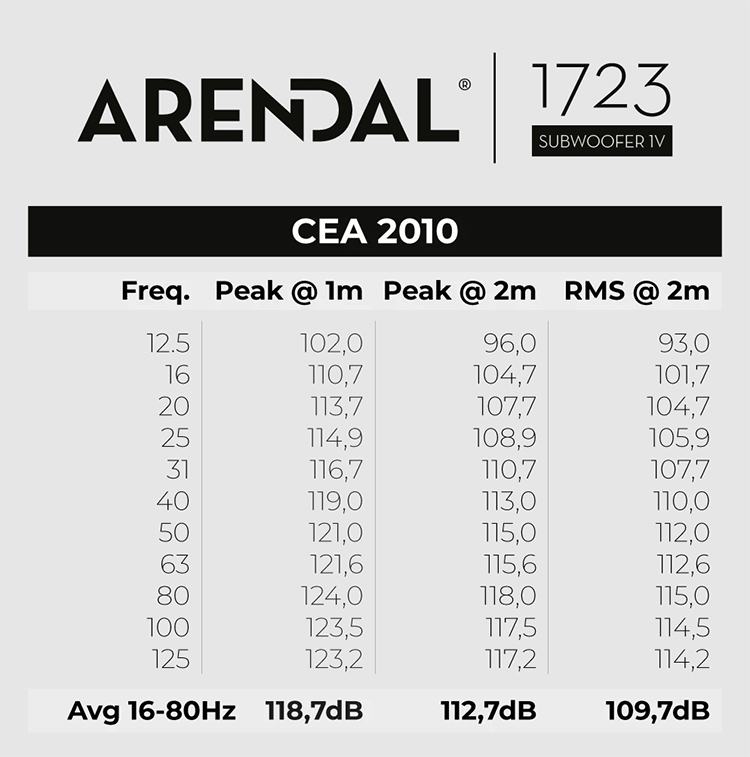
The cabinets of all the speakers in the 1723 range are built from thick, high-density fiberboard, coated in up to 12 layers of paint. The review speakers were finished in black gloss and the subs in black satin. The gloss black, in particular, looks fantastic in the flesh, providing a nice contrast with the brushed aluminum waveguide, but it had me reaching for the duster on a daily basis! The mirror-like sheen also makes them less than ideal for being on display in light-controlled home theater rooms, for which the black satin finish might be a better choice. The gorgeous paint finish, together with heavy cabinets gives the speakers a real sense of inert solidity, passing the knuckle rap test with flying colors. The grilles attach magnetically, on both the subs and speakers, meaning no unsightly holes for those who like to run their speakers without grilles. The premium build quality extends to the rear side, where Arendal employs rhodium-coated copper binding posts, set against aluminum backplates. All these premium touches, together with their imposing design and impressive specs, certainly suggests Arendal means business!
The Arendals were set up in my living room, with the Center sat below my motorized projector screen on top of a cabinet in horizontal orientation, which is probably the orientation that most people will use it.
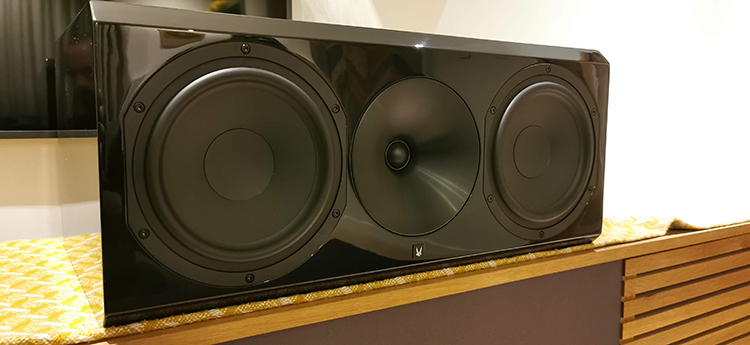
I tried seating the Monitors on my normal stands, but the stands’ top plates felt a bit too small for the large 1723s, so I placed them on two identical 19” high solid wood side tables and used rubber feet, which worked perfectly. It also positioned their tweeters at almost exactly the same height as that on the Center and in line with ear height. I then located the two Sub 1Vs at positions I knew measured well at the listening position: one in the back right corner and one about two-thirds into the room, on the left sidewall. The speakers were powered by a JBL SDA7200 power amp, which produces 400W per channel into 4 Ohms via its Hypex modules. The Monoprice Monolith HTP-1 performed processor duties and for sources, I used a combination of Kodi on an Nvidia Shield TV Pro, an Osmo Vero 4K, and an Xbox Series X. For music I used Qobuz, playing via Roon directly to the HTP-1, which serves as a Roon endpoint.
My listening position is approximately 12 feet from the main speakers and 8 feet from the surrounds, which together with the power handling of the Arendals and their sensitivity meant I could easily hit THX reference 105dB peaks at the listening position. I find listening at that level a bit much, so I dialed it down a touch, but it’s good to know the Arendals have headroom to spare.
Arendal is one of the few speaker companies that proactively publish speaker measurement data on their website (found here). The following shows the impressively smooth on-axis frequency response of the Monitors, measured in an anechoic chamber and presented at 1/6 octave smoothing.
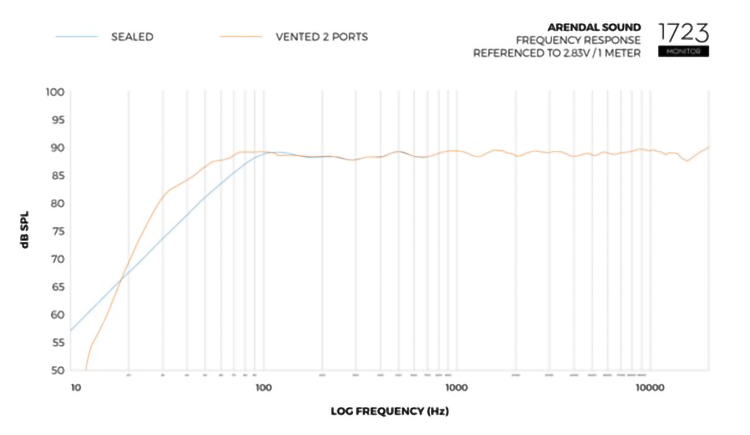
Being as the Center is identical to the Monitors its frequency response is the same when used vertically. When used horizontally, it is likely to exhibit some off-axis dips in the horizontal plane, as is typical with two-way midwoofer-tweeter-midwoofer (MTM) designs. My listening room wasn’t set up to measure reliably for this though and in practice I didn’t notice any audible issues.
The Surrounds have a similarly flat frequency response and a similar roll-off to the mains (when the mains are used in sealed mode).
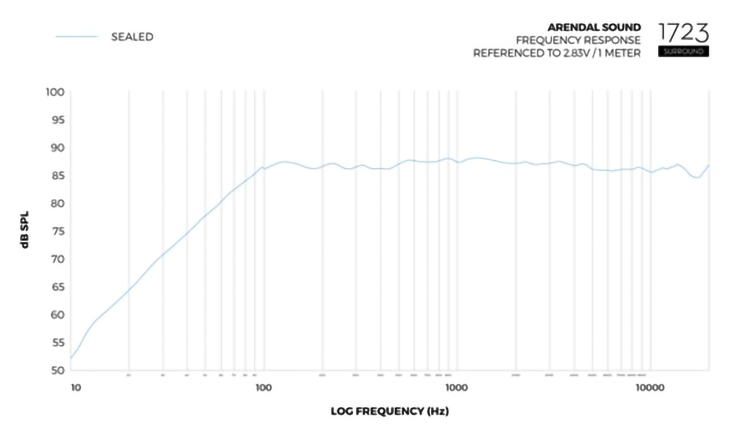
The Monoprice HTP-1 supports Dirac with Dirac Live Bass Control, which I used to calibrate the system. Once the speakers were in position I crossed all of them over at 80Hz and set up several Dirac calibrations: one full range, one limited to 500Hz, and one with a slight house curve, adding a gradual 4dB bump below the crossover. With the subs, in particular, Dirac produced excellent results at the listening position, yielding a reasonably flat response down to below 20Hz.

Given that my home theater room doubles as a living room (my family might say that should be the other way around!), my day-to-day speakers are reasonably discreet. I hide my center speaker within a custom-built cabinet, behind an acoustically transparent cloth, and my white wall-mounted surrounds are fairly unobtrusive. The Arendals are, by contrast, anything but discreet. They are large, heavy, imposing beasts that dominate the room and seem to radiate power before they even make a sound. That being the case, once everything was calibrated with Dirac I sat back, braced myself for impact, and kicked off my listening with some two-channel audio, limiting the upper curtain for room correction to 500Hz.

“The Chain”, Rumours (Super Deluxe), Fleetwood Mac
I reached for one of my go-to testing tracks, The Chain on Fleetwood Mac’s Rumours (Super Deluxe), a track I’ve listened to countless times on numerous systems and one I know inside out. My first impression was one of complete surprise. With that large waveguide, I had expected a diffuse image, but instead, I was greeted with a central image of reach-out-and-touch solidity; the kind of image that makes one want to get up and check whether the center speaker’s playing.
Lindsey Buckingham and Stevie Nicks’ vocals can get somewhat lost on less accomplished speakers but that wasn’t the case here. Their voices locked onto the spot between the speakers while instruments occupied spaces across the width of the room, yielding the expected large soundstage, but with a degree of refined, top-end clarity I hadn’t anticipated. What’s more, the industrial powerhouse aesthetic belied unusual delicacy. The Monitors resolved subtle nuances in music and rendered them naturally, without any hint of the brightness one often sees with speakers obviously targeted at the home theater market. If anything, I found them a hair laid back in the mid-range as compared to designs that employ a dedicated mid-range driver, but that worked well. The Arendals are speakers that successfully tread the fine line between resolving detail on the one hand, while, on the other, avoiding the type of warts-and-all presentation that makes poor recordings unlistenable and loud volumes unbearable.

Drive on Automatic for The People, R.E.M.
Those favorable impressions continued as I worked my way through my testing tracks. R.E.M.’s Drive on Automatic for The People is another personal favorite, and here the Arendals really shone. When Michael Stipe’s vocals hit at the 30-second mark they have a slight echo which, in the wrong hands, sounds flat and lifeless, but when handled properly sounds open and three-dimensional.
The Arendals rendered this superbly, with a genuine depth and height to the soundstage that, even from two channels, lent an immersive quality. Another instructive part of the track for testing purposes is the 1:12 point, where the acoustic guitar strums should have a percussive quality. Here, again, the Arendals impressed, achieving exactly the kind of punchy impact I test for at that point in the track and which few speakers achieve as successfully.

Overlord
So, the Arendals can certainly do justice to music. But competence with music is not what one typically thinks of when one sees THX-certified speakers. The THX branding on the Arendals evokes thoughts of the THX Deep Note playing in theaters (and for older Simpsons fans, the image of Hans Moleman’s glasses shattering!). It signifies speakers that play cleanly at high sound pressure levels. It was time to test their home theater chops and I knew, before the Arendals arrived through my door, which movie I’d fire up first on the 1723s: Overlord.
Specifically, the intro scene in which a squad of US paratroopers is flown behind German lines on the eve of D-Day. Within moments of the film beginning bombs exploded all around the plane, providing an especially energetic workout for the Sub 1Vs. The 1Vs did not disappoint. Indeed, the whole 1723 system came to life, singing in unison while all hell broke loose in my room. The Arendals’ performance here was breathtakingly good. I mean that figuratively, but it’s not far from the literal truth, the subs hit with such ferocious, chest-pounding force. That chest-pounding was accompanied by transient dynamics that saw the speakers swing effortlessly between comfortable and terrifying, with no hint of strain or distortion. The Arendals did not merely pass the Overlord test, they set a new benchmark. I have never heard a system that sounds at once so coherent amidst the bombing chaos and also so impactful.

Cue Tenet
There are certain qualities I prize in home theater speakers: bass impact and transients are high up that list. When speakers can do both well, it’s addictive. The Arendals’ performance with Overlord fed that addiction, but I needed more. Cue Tenet, and yet another chaotic opening scene as “The Protagonist” joins an armed extraction at the Ukraine’s National Opera House (which is actually shot at a different location, in Estonia). Again, the Arendals impressed, rendering gunshots with the type of whip-cracking force one typically associates with high-efficiency compression driver-based speakers. The Surrounds supported the action across the front with a full-throated performance across the rear, delivering bucketloads of dynamics and sounding every bit up to the standard of their Monitor counterparts.
Secrets Sponsor
The frenetic action at the start of the scene, and indeed throughout much of the film, is underpinned by a pounding bass track that borders on the excessive, which the Sub 1Vs took in their stride. The option to run in ported or sealed mode gives users the flexibility of picking their preferred approach. The distinction between ported and sealed subs is often oversimplified as tighter, more controlled bass for sealed subs, with a more gradual roll-off, and a less controlled performance, but with more output and a steeper roll-off for ported subs. I tried both approaches and ported might just have edged it in terms of visceral impact, but there really wasn’t much difference. The 1Vs, once dialed in, are tremendously articulate and hard-hitting in either mode. As mentioned earlier in this review I own the previous top-of-the-line Arendal Sub, the Sub 3, which is similarly hard-hitting but doesn’t seem to dig quite as deep as the 1Vs, despite the 1Vs being lower down Arendal’s new subwoofer range.

Oblivion
I moved on to yet another intro scene, this time the opening of Oblivion. I’ve always found this an excellent scene to examine multiple attributes of a speaker’s performance. Tom Cruise’s vocals during the dream scene provide a good test of the center channel and can easily sound honky and unnatural, whilst the subtle background effects – from the sound of shower water to the noise of the generators that convert seawater to fusion energy – can get lost if a speaker is insufficiently revealing. On all counts here, the Arendals performed admirably. In particular, Cruise’s voice sounded natural and lifelike on the Center, with a real weight to it. If I could find any fault at all it was that some of the background effects lacked the very last ounce of midrange clarity.
That really is nit-picking though and, while I’ve heard that last ounce of clarity on other speakers I’ve had in this room recently (e.g., Revel F206s and ATC SCM40s, both of which have dedicated midrange drivers), the Arendals were hardly lacking here, revealing a detailed and highly immersive soundscape. When it reached the point where Cruise enters the ‘Bubble Ship’, the Arendals once again strut their stuff. The sound of the ship’s guns swinging into place landed with a convincing heft, whilst the ship’s flight into the canyon and through the storm was presented across a spacious – no, huge – soundstage, punctuated by lightning bolts that revealed a tremendous dynamic range. As Cruise brought the ship in to land, the sound of the ship’s engines panned around the room with complete coherence, demonstrating again the Surrounds’ impressive ability to keep up with the mains, leaving me shaking my head in amazement and grinning ear to ear.
The Arendal 1723 THX surround system is an unqualified success from almost every standpoint I can imagine. Incredible value and highly recommended!
- Superb build quality, fit, and finish on all counts.
- Unusually large waveguide makes a difference you can hear.
- Mains and surrounds sharing the same drivers and waveguide leads to a cohesive and immersive result.
- I liked the Sub 1V so much I bought the pair!
- Arendal to release their subwoofer app.
Try as I might, I could not wrongfoot the Arendals with anything I threw at them. I’ve alluded on occasion to the Arendals being a fraction laid back in the midrange, but I really do mean a fraction, and that is only when compared to speakers with dedicated midrange drivers that cost almost twice the price of the Monitors. Looked at in the round, the Arendals offer a truly compelling package that is difficult to better. Perhaps due to their waveguide, they project a vast and enveloping sound that is as equal to anything I’ve heard, at any price. They may be a touch large and imposing for living room-based systems like my own, where domestic considerations militate against imposing black boxes (although they do come in white, and Arendal produce a smaller ‘S’ version), but, if I were fitting out a dedicated home theater, I would add the Arendals to a very short shortlist. In fact, seeing as I can accommodate the Sub 1Vs in my room with a bit of work to hide them, I’ve put my money where my mouth is and bought a pair. I said at the outset that, with the 1723 THX series Arendal were aiming to achieve a no-compromise home theater package; in my opinion, that aim has, without a shadow of a doubt, been realized.


